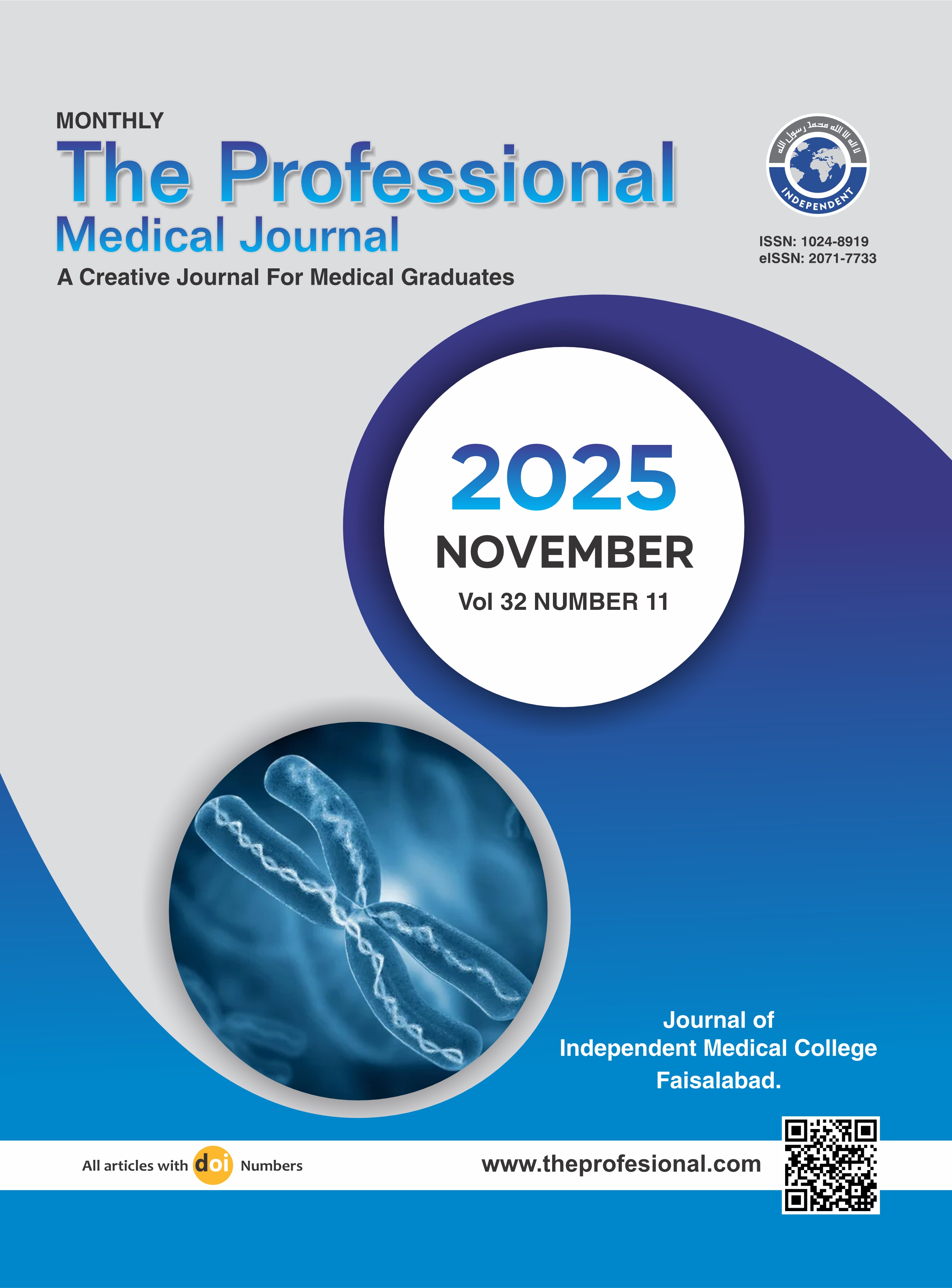Role of imaging in the diagnosis and treatment of brain vascular malformations.
DOI:
https://doi.org/10.29309/TPMJ/2025.32.11.9897Keywords:
AVM, Brain Vascular Malformations, Diagnosis, DSA, Machine Learning, MRI, Personalized Treatment Planning, Radiomics, Susceptibility-weighted Imaging, 4D Flow ImagingAbstract
Objective: To evaluate the effectiveness of advanced MRI sequences and DSA in the detection, classification, and treatment planning of brain vascular malformations, and to compare their diagnostic value with ultrasonography. Study Design: Observational study. Setting: Bajwa Trauma Centre & Teaching Hospital, Sargodha. Period: 1st November 2024 to 1st May 2025. Methods: Involving 59 patients clinically suspected of harboring brain vascular malformations. All patients underwent MRI using a comprehensive protocol including T1, T2, SWI, DWI, contrast-enhanced 3D sequences, and ANGIO TWIST. Ultrasonography was used as a preliminary modality, while DSA was performed in selected cases for confirmatory vascular mapping. Data were analyzed for lesion detection rate, subtype classification, and contribution to treatment planning. Results: MRI demonstrated high sensitivity (91.5%) in detecting vascular lesions, with susceptibility-weighted imaging (SWI) accurately identifying hemosiderin in 94.4% of cavernomas and 4D flow/ANGIO TWIST detecting arteriovenous shunting in 88% of AVMs. DSA, while more invasive, remained critical for confirming angioarchitecture and dynamic flow patterns. Ultrasonography offered supportive but limited diagnostic specificity. AVMs were the most common lesion type (42.4%), followed by cavernous malformations (30.5%) and DVAs (16.9%). Additional findings such as intracranial hemorrhage (33.9%) and perilesional edema (23.7%) were also characterized. Conclusion: Advanced imaging modalities, especially MRI with SWI and dynamic sequences, play a pivotal role in the early and accurate diagnosis of brain vascular malformations. DSA remains indispensable for treatment confirmation. The integration of radiomics and machine learning, as supported by current literature, offers promising directions for individualized risk stratification and therapeutic planning.
Downloads
Published
Issue
Section
License
Copyright (c) 2025 The Professional Medical Journal

This work is licensed under a Creative Commons Attribution-NonCommercial 4.0 International License.


